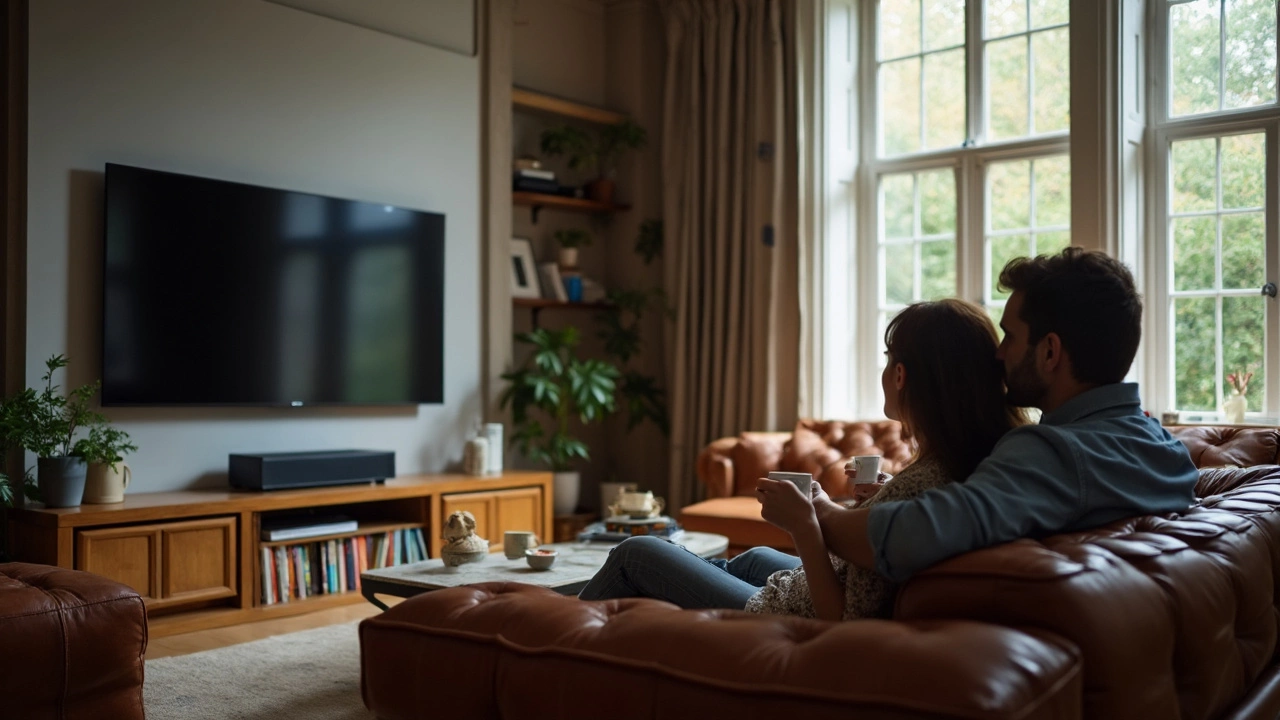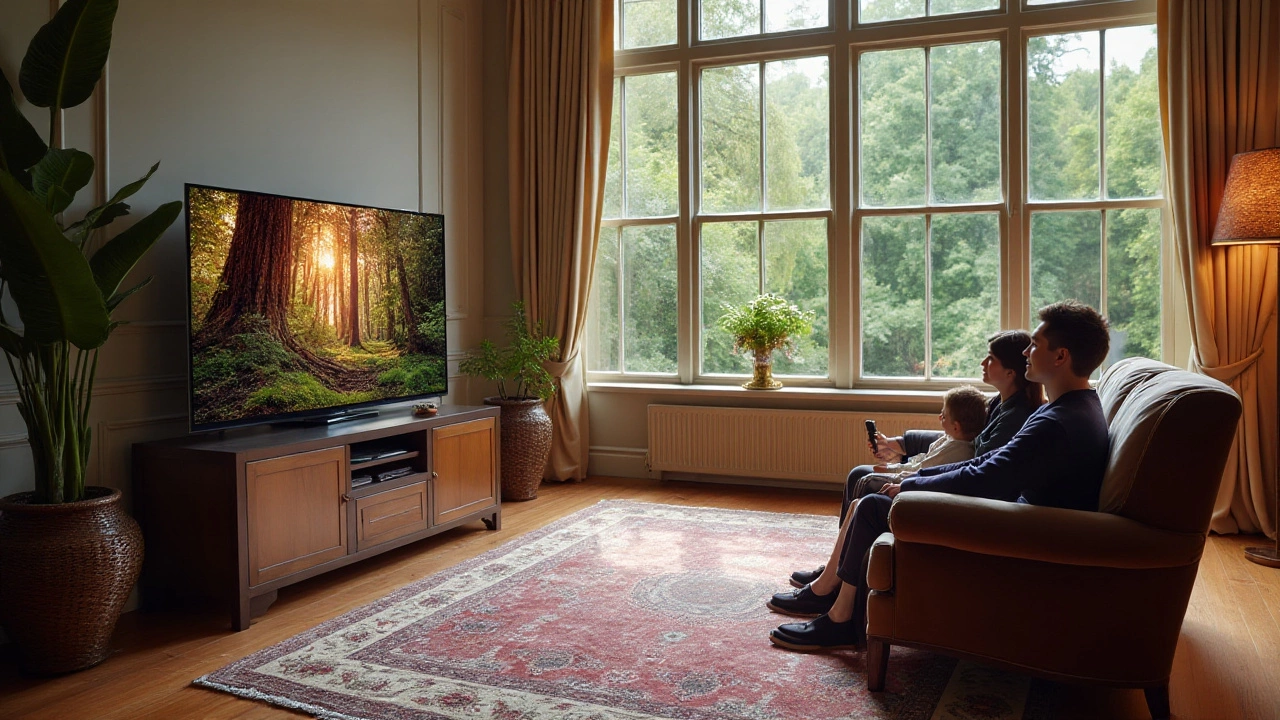65-inch TV: How to Pick the Right Stand, Place It Safely, and Get the Best Viewing Experience
Got a brand‑new 65‑inch screen and wondering where it should live? You don’t need a PhD in interior design to get it right. The biggest mistakes are using a stand that’s too small, putting the TV at the wrong height, and sitting too close or too far from the screen. Let’s break down the simple steps that keep your TV stable, look good, and give you a great picture.
Pick a Stand That Actually Fits
First rule: the stand’s width should be at least as wide as the TV’s base. Most 65‑inch screens are about 57‑58 inches wide, so a stand under 50 inches will look cramped and could tip over. If you already own a 55‑inch stand, double‑check the clearance. Measure the stand’s top surface and compare it to the TV’s width—add a couple of inches of breathing room. A wider stand not only looks balanced but also distributes weight better, especially if you have kids or pets climbing on it.
Material matters too. Solid wood or metal frames hold up better than particle board. Look for a stand with a sturdy back panel and, if possible, anti‑tip brackets. Those little metal arms can make a big difference if someone bumps the TV.
Safe Placement and Height
Where you put the TV is just as important as the stand. The ideal height puts the screen’s center about eye level when you’re seated. For most sofas, that’s roughly 42‑48 inches from the floor. Use a tape measure: sit on your couch, look straight ahead, and note the height of your eyes. The TV’s middle should line up with that point.
Don’t mount the TV too low on a wall or place it on a wobbly coffee table. Bad spots include corners where glare hits the screen, or directly above a fireplace where heat can damage electronics. A solid, flat surface away from direct sunlight and heat sources keeps the picture clear and the hardware safe.
Getting the Right Viewing Distance
How far should you sit from a 65‑inch screen? A good rule of thumb is 1.5 to 2.5 times the diagonal size. For 65 inches, that’s about 8‑13 feet (2.5‑4 m). Sitting closer than 8 feet makes the picture look pixelated, while sitting farther than 13 feet can make details hard to see.
If your room is smaller, consider moving the sofa a bit back or using a slightly smaller TV. The key is comfort—no neck strain, no eye fatigue. Test a few spots with a remote in hand before you settle on the final layout.
Style Tips That Don’t Cost Much
Once the TV is safe and the distance feels right, you can tweak the look. A simple decorative trim or a thin LED strip behind the TV adds ambience without hiding the screen. Keep cables tidy with a cord cover or a small cable box on the stand. If you need extra storage, choose a stand with drawers or shelves to hide game consoles, soundbars, and remote batteries.
Remember, the goal is a functional, safe, and pleasant viewing area. By measuring the stand, setting the right height, and keeping a proper viewing distance, you’ll enjoy movies, games, and sports without a hitch.
Now you have a clear roadmap: check the stand width, secure the TV at eye level, respect the 1.5‑2.5× distance rule, and tidy up the cords. Your 65‑inch TV will look great and work smoothly for years to come.
What is the Best Height for a 65-Inch TV?
Finding the perfect height for your 65-inch TV can enhance your viewing experience and reduce neck strain. Consider factors like the room's layout, your seating position, and eye level when mounting or placing your TV on a stand. Get insights on optimal height calculations to make your next movie night the best one yet.
MoreUnderstanding the Size Difference: 75-Inch vs 65-Inch TV for Your Stand
Choosing the right TV size can significantly impact your viewing experience and the atmosphere of your living space. A 75-inch TV offers a more immersive experience but requires more space compared to a 65-inch model. This article delves into the size differences, room requirements, and tips for choosing the best TV stand for these larger screens. Learn about the advantages of each size to make an informed purchase decision. Discover practical tips for optimizing your space to accommodate bigger TVs.
More

